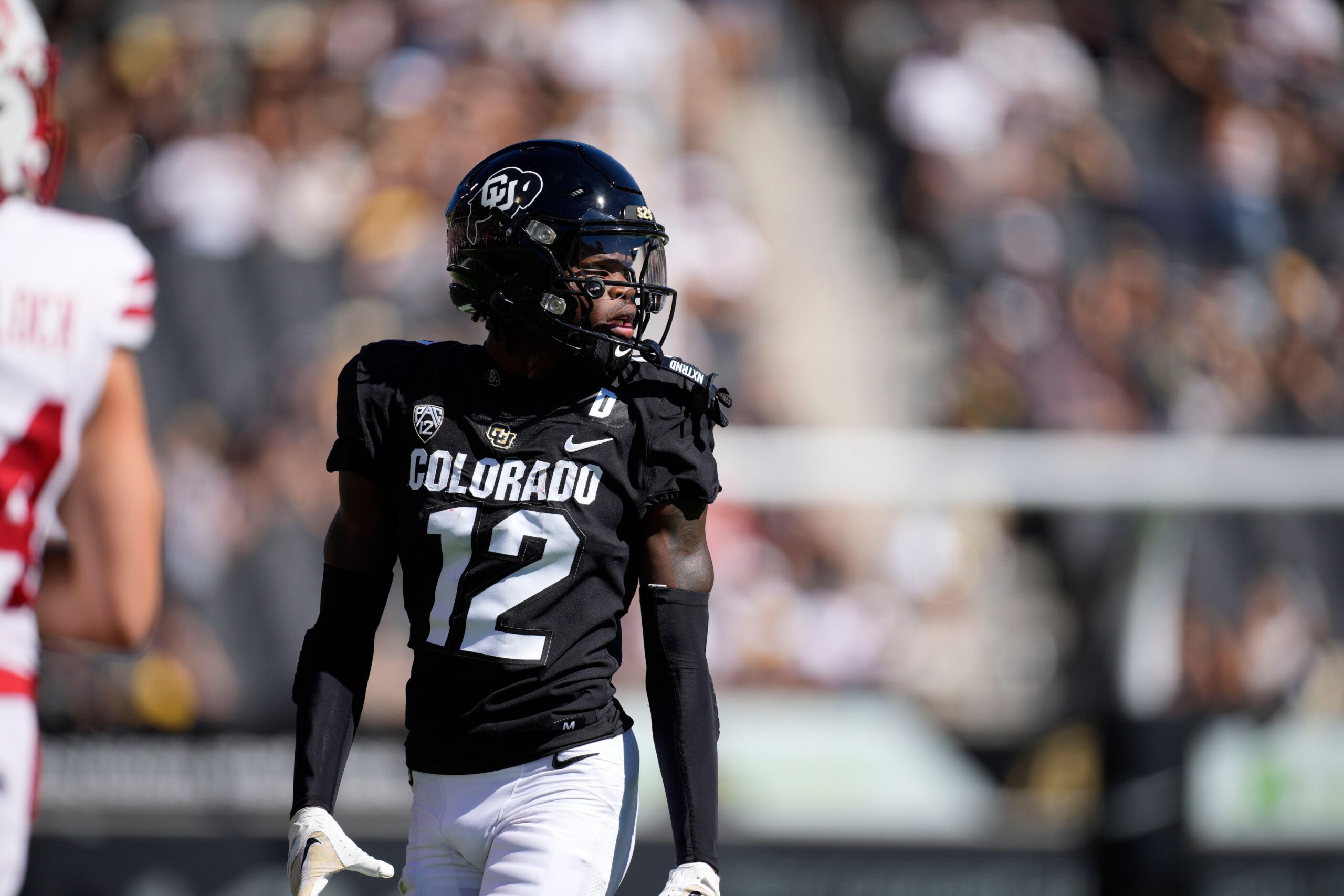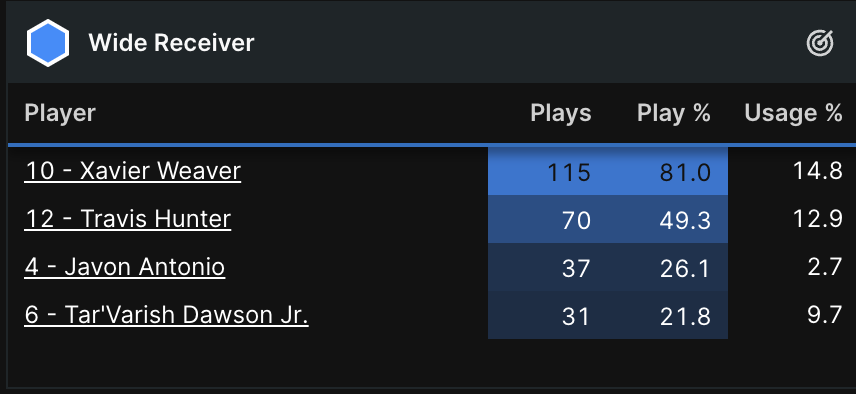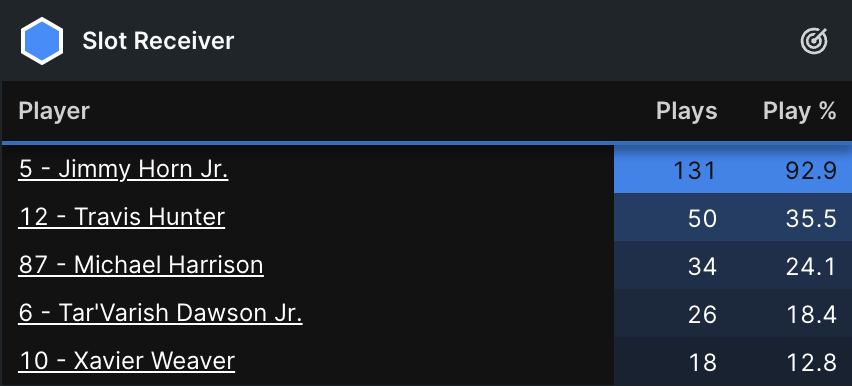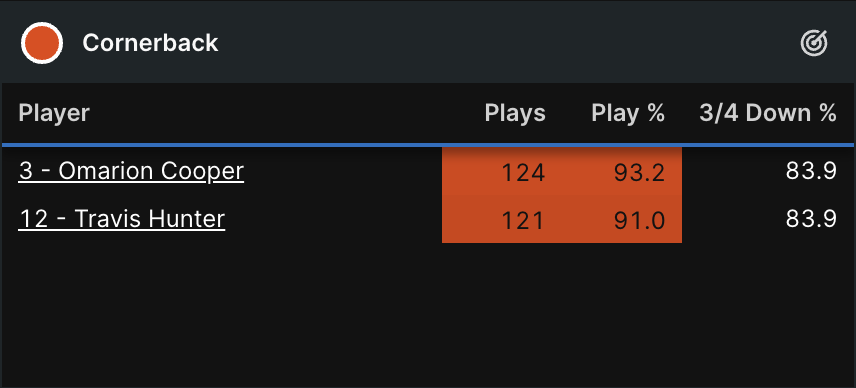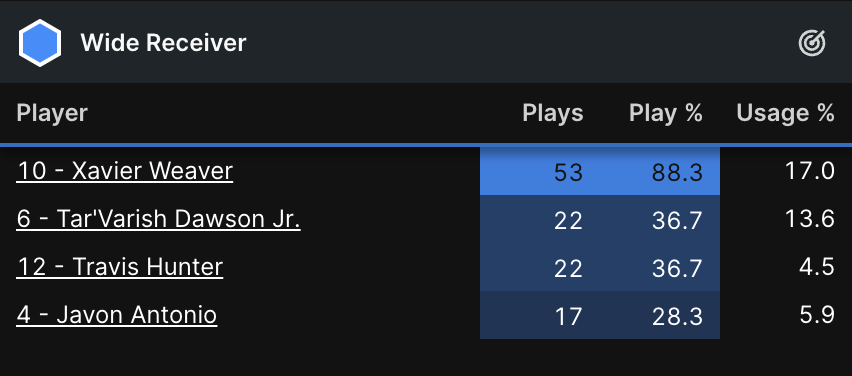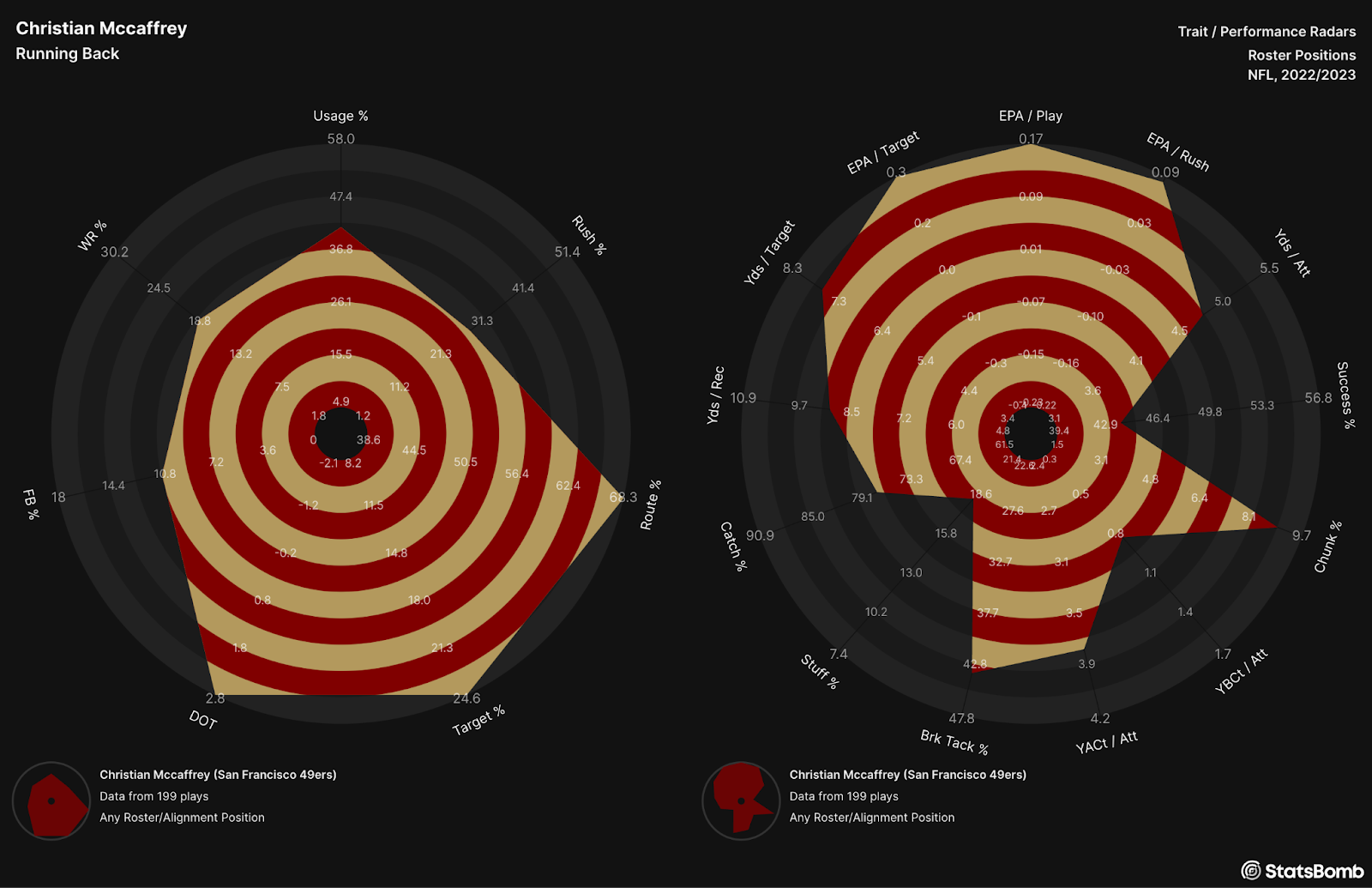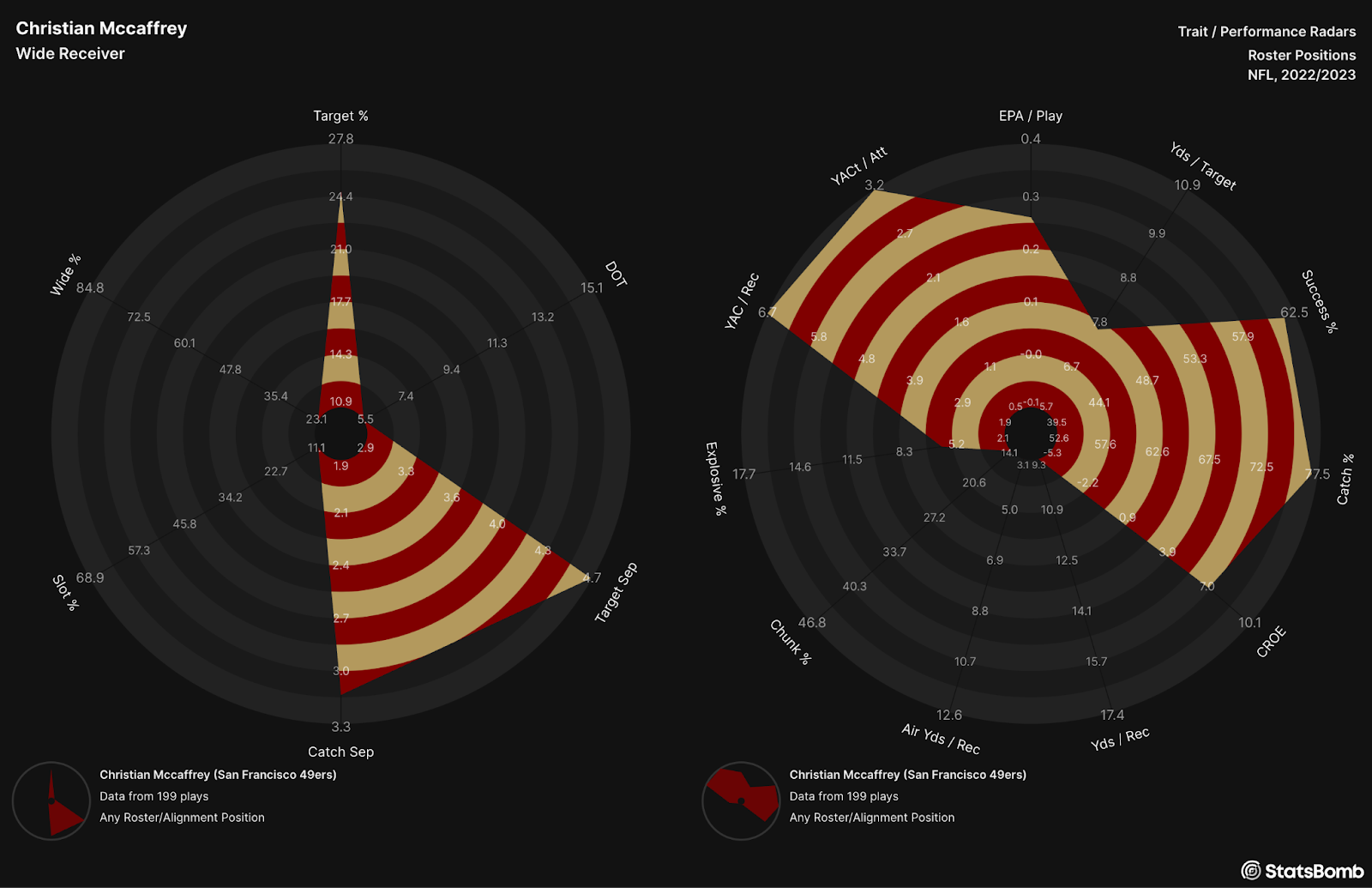NOTE: Following Hudl’s acquisition of Statsbomb, its football platform is now called Hudl IQ. Learn more about the acquisition here.
Travis Hunter burst onto the scene for Colorado by taking snaps on offense and defense - averaging over 60 plays per game on each side of the ball over the Buff’s first two games - upending the traditional understanding of a player’s position. Hunter is the most extreme example of the growing trend of positional flexibility in football, exemplified by Kyle Shanahan’s use of Deebo Samuel, Kyle Juszczyk, and Christian McCaffrey for the 49ers, Cordarrelle Patterson for the Falcons, and even Frank Gore Jr. at Southern Miss.
How Hudl IQ handles multi-position players
These players challenge analysts by breaking comfortable player archetypes. Personnel evaluators must spend much more time than usual to collate information. Hudl IQ's data was designed with this exact problem in mind. We identify players not just by their official position on the roster or even their most common position played over a game or season, but by where they line up on every single snap.
Our depth chart tools are designed so that a user can view a team either via rostered positions or “as-played” snap alignments to give a fuller sense of which players played where than traditional sources. In his first two games for the Buffaloes, Hunter spent significant time aligned both in the slot and out wide, showing up slightly more often in wide alignments, while lining up at corner on virtually all of his defensive snaps.
Of course, the analysis doesn’t stop there. The same data and tools allow for a deeper dive on how often and where Hunter has been deployed in various personnel packages. On defense, the Buffs predominantly use a 3-3-5 look almost doubling the FBS average use of that personnel group.
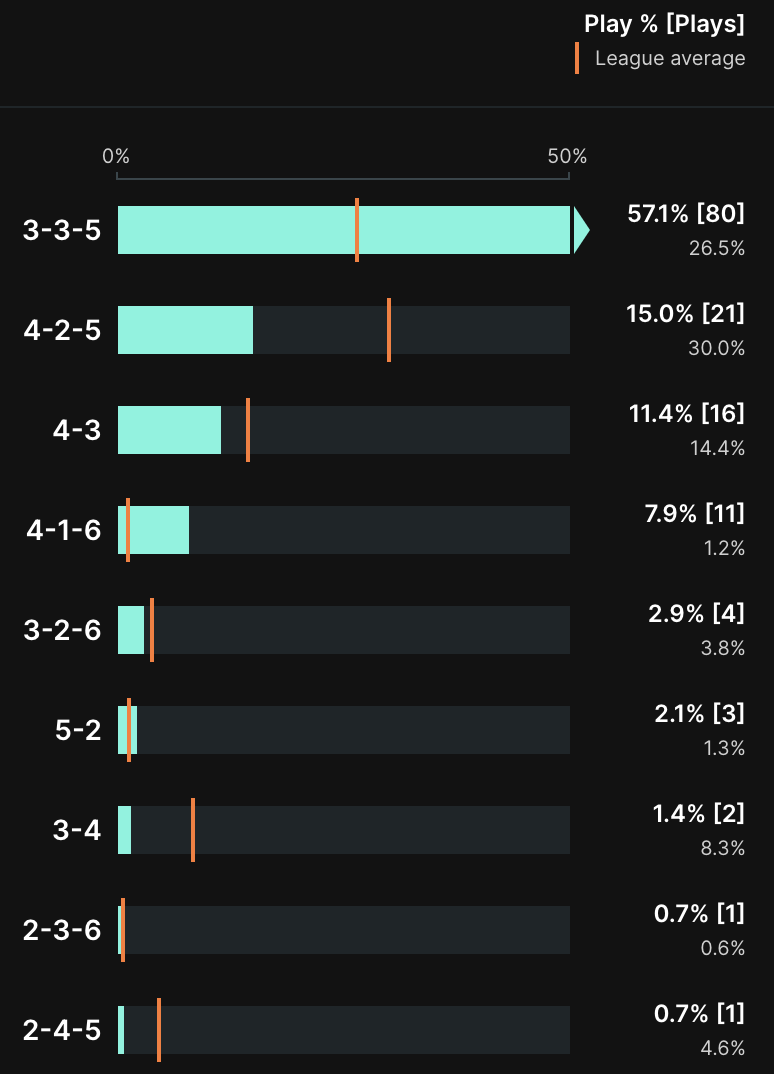
On offense, Colorado runs two running back sets with a much greater frequency than the FBS average, while rarely using tight end sets.
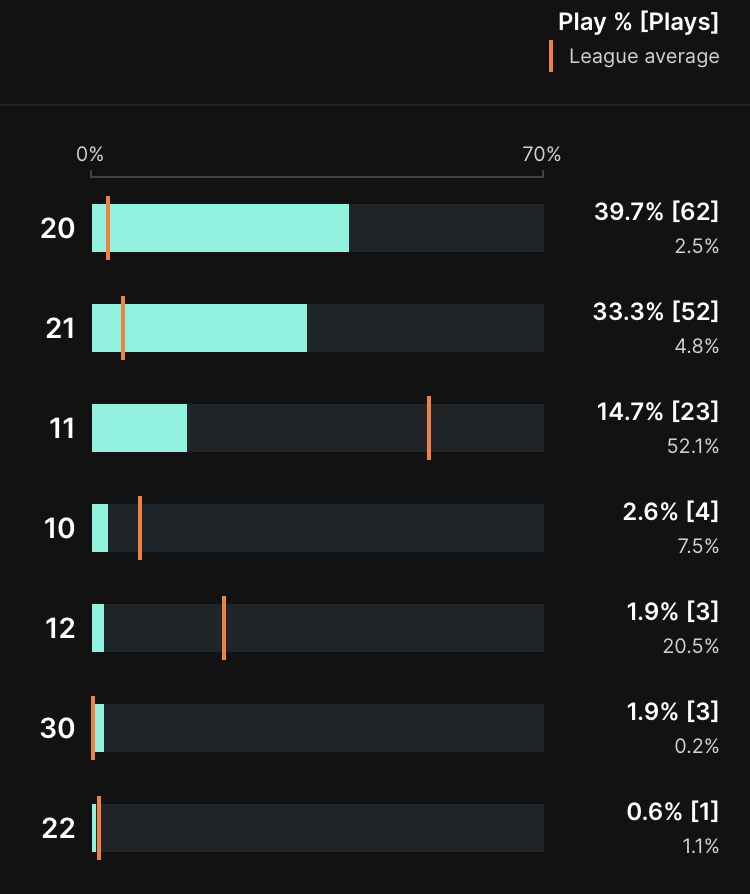
Filtering play counts by personnel group, we can get a more granular view of Hunter’s usage. In 20 personnel, Colorado’s most common offensive group, Hunter has lined up in the slot nearly two-thirds of snaps (66.1%) compared to 33.5% of Colorado’s plays across all personnel groups.
Two games might not be enough of a sample to get a great sense of Hunter’s route distribution once we start to filter to this fine a degree. However, as mentioned above, the 49ers have had great success with similarly versatile receiving threats. A player like Deebo Samuel has a large enough body of work that we can analyze the routes he runs in Shanahan’s offense from out wide, in the slot, as well as the handful of plays he lined up in as a tight end. The chart below shows Samuel’s percentage of routes run by alignment position in 2022/23:

Similarly, our player analysis tools such as our radar charts are built to examine how a player is used and how they perform out of each given alignment. For example, we can view McCaffrey’s play compared either to Running Backs or Wide Receivers.
Importantly, we can also filter to specific plays by alignment. So we can evaluate McCaffrey’s receiving performance relative to other wideouts only including plays where he aligned at wide receiver or slot receiver, filtering out plays he lined up in the backfield.
Compared with the receiving chart above, looking at just this set of plays gives a very different view of his output as a Wide Receiver. There is a noticeable drop in his YAC and YACt, to be expected given that receivers tend to work in less space than players coming out of the backfield. However, lined up as a wideout, McCaffrey puts up elite numbers in terms of EPA/Play, rate of Explosive plays - defined as those gaining 30+ yards- and overall Yds/Target. This paints a very different, and more accurate, picture of his performance and the kind of threat he represents for an opposing defensive coach.
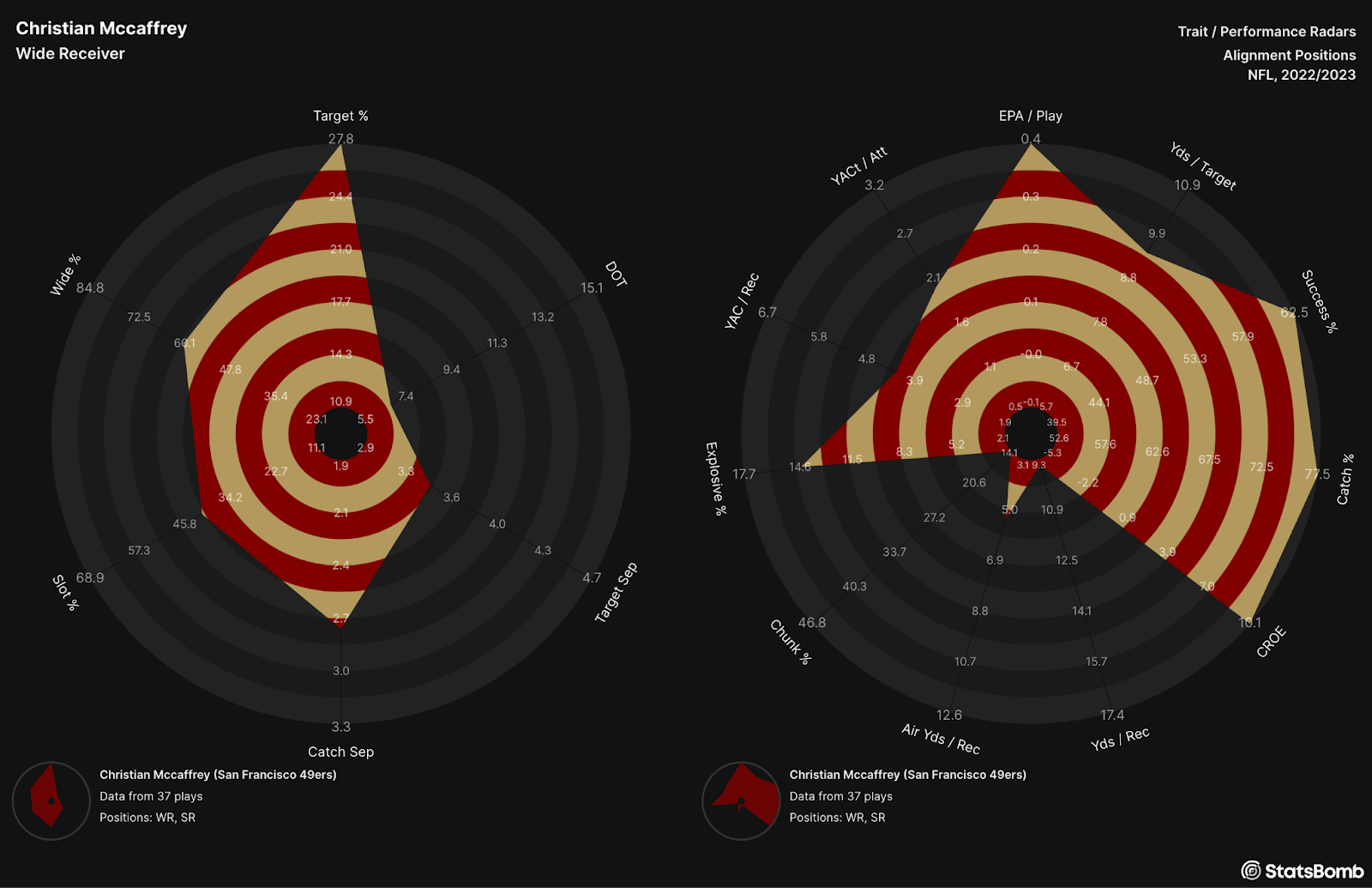
Conclusion
Incorporating formation classification into our data allows Hudl IQ to identify alignment position for every player on every play, providing the ability to fully understand the usage tendencies of the growing array of multi-position players. This capability allows analysts to do deeper dives, and do them more quickly, into some of the most exciting, dangerous and valuable players in the game.
Shane Regel
Product Owner American Football
@ShaneRegel
